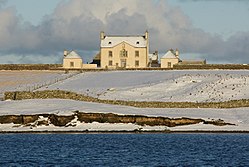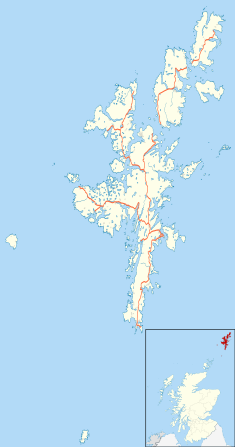| Belmont House | |
|---|---|
 Belmont House | |
| Coordinates | 60°41′15″N0°58′02″W / 60.6876°N 0.9673°W |
Listed Building – Category A | |
| Designated | 13 August 1971 |
| Reference no. | LB17474 |
| Criteria | Work of Art, Architectural |
| Designated | 31 March 2003 |
| Reference no. | GDL00054 |
Belmont House is a neo-classical Georgian country house estate on the island of Unst, the most northerly of the Shetland Islands, United Kingdom. It was constructed in 1775 by Shetland landowner Thomas Mouat of Garth who was a local Shetlander. The Estate has been described as "possibly the most ambitious, least-altered classical mansion in the Northern Isles." [1] The house was restored from a derelict state between 1996 and 2010 by the community and local interest groups and Trust.[ citation needed ]
Contents
Belmont House is protected as a category A listed building, [2] and the grounds are included on the Inventory of Gardens and Designed Landscapes in Scotland, the national listing of significant gardens. [1]
